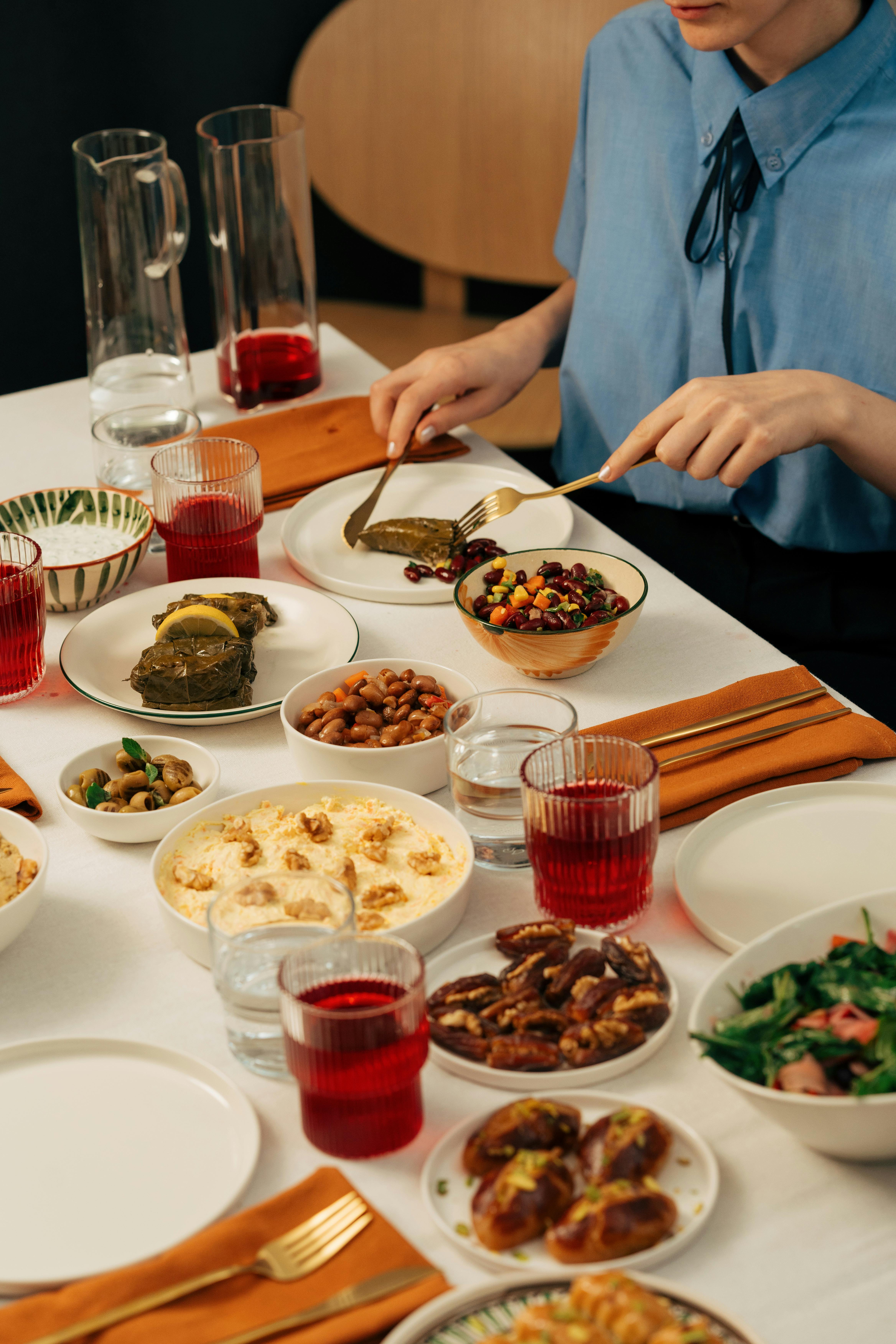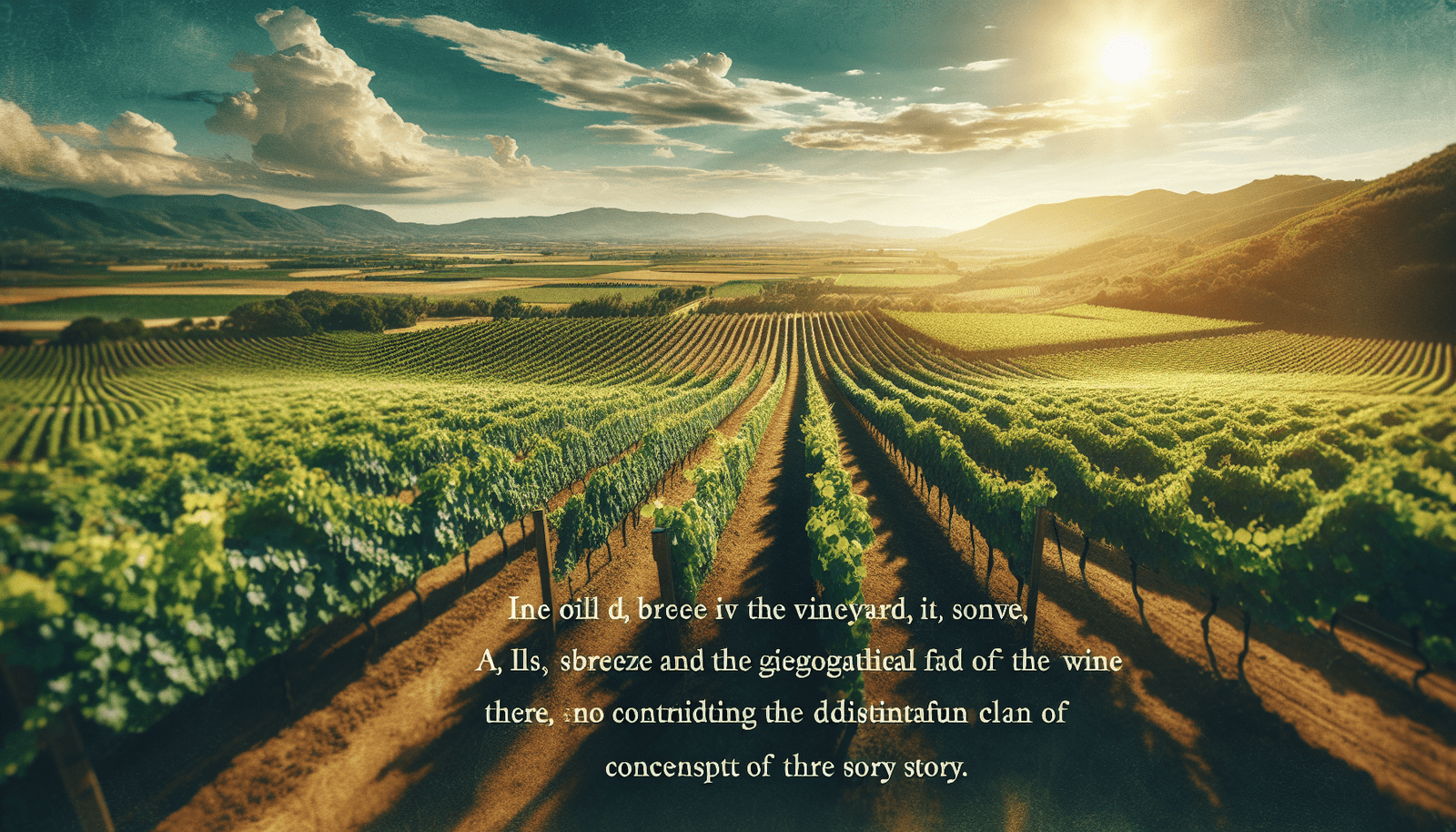Imagine walking into a charming vineyard, the earthy scent of freshly crushed grapes filling the air as you explore rows upon rows of flourishing vines. As you sip on a glass of wine, have you ever wondered why each sip holds a unique taste, reflective of its origin? Enter the fascinating concept of terroir. While challenging to define succinctly, terroir encompasses the intricate relationship between the soil, climate, topography, and human touch that come together to shape the distinct personality and flavor characteristics of a wine. In this article, we will unlock the secrets of terroir, demystifying this captivating notion and allowing you to appreciate your next glass of wine in a whole new light. Cheers to discovering the world through the lens of terroir!

What is Terroir?
Terroir is a French term that encompasses the unique characteristics and qualities of a specific geographical region that influence the production of agricultural products, such as wine, coffee, and food. It refers to the combination of environmental factors including climate, soil, topography, geology, and biological elements that contribute to the distinct flavor, aroma, and overall quality of the resulting product. Terroir is often considered the essence of a place, capturing the interactions between nature and the human touch.
Definition
The word “terroir” itself has no direct translation in English but is commonly understood as the expression and reflection of a specific place in the sensory attributes of agricultural products. It encompasses the idea that the land and its environment provide a unique set of conditions that shape the overall character and identity of a product. While terroir is often associated with wine production, it applies to various other agricultural products as well.
Origin
The concept of terroir originated in France, particularly in wine regions, where it has been a fundamental aspect of winemaking for centuries. French vintners and winegrowers have long recognized the influence of natural factors on the taste and quality of wine, leading to the establishment of France’s renowned Appellation d’Origine Contrôlée (AOC) system. The notion of terroir has since spread globally and is now embraced by agricultural producers in many parts of the world.
Importance
Terroir plays a crucial role in differentiating agricultural products and elevating them to a higher level of quality. The unique combination of environmental factors specific to a particular region contributes to the character and distinctiveness of agricultural products. It allows consumers to experience and appreciate the diverse range of flavors and characteristics that can emerge from different terroirs. Additionally, terroir encourages the preservation of traditional production methods, fosters a sense of place, and supports local economies by promoting the consumption of locally grown or sourced products.
Factors Influencing Terroir
To better understand terroir and its impact, it is essential to explore the various factors that influence it. These factors can be broadly categorized into climate, soil, topography, geology, and biological elements. Each of these elements works in harmony to shape the terroir of a specific region, ultimately influencing the resulting agricultural products.
Climate
Climate has a significant influence on terroir, as it sets the overall environmental conditions in which crops grow. It includes factors such as temperature, precipitation, and sunlight. Different climates provide varying growing seasons, heat accumulation, and rainfall patterns, which profoundly impact the development of crops and their resulting flavors.
Soil
Soil composition is another critical factor contributing to terroir. Various types of soil, such as clay, sand, loam, and silt, can be found across different regions. Each type has distinct characteristics in terms of texture, structure, and nutrient content, which affect the drainage, water retention, and fertility levels of the soil. Additionally, the mineral composition of the soil plays a vital role in imparting unique flavors and characteristics to the agricultural products.
Topography
The topography of a region, including its altitude, slope, and aspect, also influences terroir. Altitude affects temperature and sunlight exposure, with higher altitudes often resulting in cooler climates and extended ripening periods for crops. Slope, on the other hand, affects water drainage and erosion, which indirectly impacts soil quality and nutrient availability. Aspect, or the direction a slope faces, also plays a role in sunlight exposure and temperature variations.
Geology
Geology refers to the types of rocks present in the region and their mineral content. Different rocks have their chemical compositions, which can eventually be absorbed by the soil and influence the nutritional profile available to crops. Moreover, geology impacts water movement and retention in the soil, affecting overall plant growth and health. Erosion processes over time can also shape the landscape, thus potentially altering the terroir of a region.
Biological Factors
Biological factors encompass microorganisms, plant species, and wildlife present in a specific region. Microorganisms, such as yeast and bacteria, participate in fermentation processes, contributing to the aroma and flavor development in agricultural products like wine and coffee. Plant species native to the region can bring distinct characteristics to the crops, while wildlife, including insects and animals, can both positively and negatively impact agricultural production through pollination or crop damage.
Climate
Climate is a significant component of terroir, as it plays a vital role in determining the overall environmental conditions in which crops grow. Its elements, including temperature, precipitation, and sunlight, profoundly influence the development and maturation of agricultural products.
Temperature
Temperature is a critical climatic factor that affects the growth and maturity of crops. It influences the balance between sugar accumulation and acid levels in fruits, directly impacting their overall flavor profile. Different temperature patterns throughout the growing season can result in variations in ripening time, affecting the concentration of flavors and the overall balance in agricultural products.
Precipitation
Precipitation, in the form of rainfall or irrigation water, is essential for crop growth and development. The amount and timing of precipitation can influence water availability and affect the overall health and quality of plants. Adequate rainfall contributes to the hydration of crops and regulates soil moisture levels, while excessive or insufficient precipitation can lead to imbalances and impact the resulting agricultural products.
Sunlight
Sunlight provides the necessary energy for photosynthesis and contributes to the ripening process of crops. The intensity and duration of sunlight exposure influence the production of sugars and other compounds that contribute to the flavors and aromas of agricultural products. Sunlight also affects the color development of fruits, the phenolic compounds in grapes, and the overall chemical composition of crops.
Soil
Soil is a fundamental element of terroir, as its composition, structure, and nutrient content directly influence the growth, development, and flavor profiles of crops.
Types of Soil
Different regions have various types of soil, each with its distinct characteristics. Clay soils are known for their excellent water retention and fertility but may require adequate drainage to prevent waterlogging. Sandy soils, on the other hand, offer good drainage but tend to be less fertile and struggle to retain moisture. Loam soils are considered the ideal balance, offering a rich mix of clay, silt, and sand that provides good drainage and moisture retention.
Mineral Composition
The mineral composition of the soil, including elements such as potassium, phosphorus, calcium, and magnesium, plays a crucial role in providing essential nutrients to crops. These minerals are absorbed by the plants and contribute to their overall health, vigor, and flavor. Different ratios and concentrations of minerals in the soil can lead to variations in agricultural products’ taste and quality.
Drainage
Adequate soil drainage is vital for plant health, preventing waterlogging and root suffocation. Proper drainage allows excess water to move away, facilitating the constant supply of oxygen to plant roots. Depending on the soil type and topography, drainage can vary, impacting crop growth, nutrient uptake, and overall plant health.
Nutrient Content
The nutrient content of the soil plays a pivotal role in the growth, development, and quality of crops. Essential macronutrients such as nitrogen, phosphorus, and potassium, as well as micronutrients like iron, zinc, and manganese, are necessary for healthy plant growth. The availability and balance of these nutrients influence the flavor, color, and nutritional value of agricultural products.

Topography
Topography, which refers to the physical features of a region, significantly influences terroir, as it impacts factors such as temperature, water drainage, and sunlight exposure.
Altitude
Altitude plays a crucial role in terroir, particularly in mountainous regions. Higher altitudes often experience cooler climates due to the reduction in temperature as elevation increases. Cooler climates contribute to slower ripening processes, resulting in increased flavor complexity and acidity in agricultural products like grapes and coffee beans.
Slope
The slope or incline of a region affects the water drainage and erosion processes that shape the soil’s structure and composition. Steep slopes generally promote better drainage but can also increase erosion risks. The angle of the slope influences sunlight exposure, with different aspects receiving varying degrees of sunlight throughout the day. The combination of slope and aspect affects temperature and sunlight exposure, ultimately influencing crop growth and flavor development.
Aspect
The aspect refers to the direction a slope faces relative to the sun, which impacts the amount and duration of sunlight received by crops. South-facing slopes typically receive more sunlight exposure, increasing overall heat accumulation and promoting grape vine growth. On the other hand, north-facing slopes may experience cooler conditions and slower ripening periods. The aspect of a region, therefore, contributes to variations in agricultural products’ flavor profiles and maturation.
Geology
Geology, specifically the types of rocks present in a region and their mineral content, shapes the terroir by influencing soil composition, water movement, and nutrient availability.
Types of Rocks
Various types of rocks can be found in different regions, such as limestone, granite, shale, and volcanic rocks. Each rock type has its distinct chemical composition, which can influence the mineral content of the soil and, consequently, the nutrient availability for crops. Different types of rocks can also affect water movement through the soil, impacting drainage and overall soil fertility.
Mineral Content
The mineral content of rocks influences the soil’s nutritional profile. Over time, rocks gradually weather and break down, releasing minerals into the surrounding soil. These minerals are then absorbed by plants, contributing to their overall health and flavor. The specific composition of minerals present in the rocks will have a direct impact on the resulting agricultural products’ taste and quality.
Erosion
Erosion, occurring naturally over time, can shape the landscape and impact the overall terroir of a region. Erosion processes, such as the movement of water and wind, can alter the structure and composition of the soil. This, in turn, can affect drainage, soil fertility, and nutrient availability, all of which play significant roles in shaping the resulting agricultural products grown in the region.

Biological Factors
Biological factors encompass the microorganisms, plant species, and wildlife present in a region, each contributing to the unique characteristics and flavors associated with terroir.
Microorganisms
Microorganisms, such as yeast and bacteria, play a crucial role in various agricultural processes, particularly in the production of wine, coffee, and fermented foods. In winemaking, yeast is responsible for alcoholic fermentation, converting sugars into alcohol. Different strains of yeast can influence the flavor and aroma characteristics of the resulting wine. Similarly, bacteria are involved in malolactic fermentation, contributing to the development of complex flavors and textures in wine. In coffee processing, microorganisms play a role in fermentation, enhancing flavor complexity and altering the chemical composition of the beans.
Plant Species
The native plant species found in a particular region can influence the terroir. These plant species can affect the overall biodiversity and provide a unique blend of flavors and aromas that influence the crops grown in the area. In wine production, certain plants in the vineyard ecosystem can contribute to the overall expression of terroir through interactions with the grapevines. Similarly, in coffee cultivation, the presence of specific tree species can enhance the flavors and aromas of the coffee beans grown in their shade.
Wildlife
The wildlife present in a region can also impact terroir. In some cases, wildlife may contribute positively by assisting with pollination or natural pest control. However, wildlife can also cause damage to crops if appropriate measures are not taken. The presence of specific wildlife species in certain regions can contribute to the overall biodiversity, further enhancing the sense of terroir and the unique character of agricultural products.
Terroir in Wine Production
Terroir’s significance is perhaps most notable in the world of wine production. The concept of terroir has been a fundamental aspect of winemaking for centuries, with a profound impact on grape varieties, wine characteristics, and the establishment of appellation systems.
Impact on Grape Varieties
Terroir significantly influences the selection and performance of grape varieties in different wine regions. Certain grape varieties thrive in specific climatic and soil conditions, with each grape variety expressing unique flavor profiles and characteristics. Producers carefully consider terroir elements to determine which grape varieties are most suited to a region’s conditions, ensuring the best expression of terroir in the resulting wines.
Influence on Wine Characteristics
The specific combination of terroir elements contributes to the flavor, aroma, and overall quality of wines. Climate determines the balance between acidity and sweetness, while soil composition imparts mineral nuances and texture. The topography and aspect of a vineyard influence sunlight exposure, affecting ripening patterns and grape phenolic compounds. Geology can also play a role, adding complexity through its mineral content. Together, these factors contribute to the unique character and depth found in wines produced from different terroirs.
Appellation Systems
The concept of terroir has driven the establishment of various appellation systems worldwide. These systems aim to regulate and protect the quality and integrity of wines produced in specific regions, acknowledging the influence of terroir on their characteristics. Appellation systems such as France’s Appellation d’Origine Contrôlée (AOC) and Italy’s Denominazione di Origine Controllata (DOC) ensure that specific geographical indications and winemaking traditions are reflected in the resulting wines. These systems also provide consumers with a level of confidence in the origin and quality of the products they purchase.
Terroir in Coffee
Similar to wine, terroir plays a significant role in coffee production, impacting regional flavor profiles, growing conditions, and processing techniques.
Regional Flavor Profiles
Coffee’s flavor profile is heavily influenced by its terroir, with each region offering a unique taste experience. The combination of climate, soil types, and altitude affects the chemical composition of coffee beans and contributes to flavor nuances. For example, coffee grown at higher altitudes tends to have brighter acidity and floral notes, while lower-altitude coffee may exhibit more pronounced sweetness and body. The regional characteristics of coffee contribute to the diversity and complexity of the global coffee market.
Growing Conditions
The terroir of a coffee-growing region directly affects the growth and development of coffee plants. Factors such as temperature, rainfall patterns, and sunlight exposure influence the maturation process of coffee cherries. The overall flavor, acidity, and sweetness of the beans are strongly influenced by these growing conditions. Additionally, the soil composition and drainage in coffee-growing regions impact the nutritional uptake of the plants, further shaping the flavor characteristics displayed in the final cup of coffee.
Processing Techniques
The processing techniques employed during coffee production can either preserve or alter the terroir characteristics of the beans. The methods used to remove the fruit pulp from the coffee cherries and dry the beans can influence the flavor, body, and aroma. Different regions often have their preferred processing techniques, allowing them to accentuate terroir-specific flavors or introduce new complexities. The careful selection and implementation of processing methods ensure the preservation and expression of terroir in the final cup of coffee.
Terroir in Food
The concept of terroir extends beyond wine and coffee and also encompasses the world of food, where it is recognized in regional cuisine, local ingredients, and traditional production methods.
Regional Cuisine
Terroir is closely linked to regional cuisine, where specific geographical areas have long-standing culinary traditions that reflect their unique terroir. Certain ingredients, cooking techniques, and flavor combinations are deeply rooted in the history, culture, and natural resources of a region. Regional cuisine celebrates and showcases the distinct flavors, textures, and aromas that emerge from the local terroir, offering a true taste of a place.
Local Ingredients
The cultivation and use of local ingredients are a core component of terroir-driven food production. Locally sourced ingredients, whether fruits, vegetables, dairy products, or meats, carry the essence of the surrounding terroir. These ingredients exhibit the flavors and characteristics shaped by the region’s climate, soil, and farming practices, ultimately contributing to the unique taste experiences offered by local cuisine. By using local ingredients, chefs and food producers support local farmers and foster a deeper connection with the land.
Traditional Production Methods
Terroir often encourages the preservation of traditional production methods in food production. Traditional techniques, passed down through generations, pay homage to the terroir of a specific region and enhance the quality and authenticity of the resulting food products. These methods may include traditional fermentation, aging processes, or specialized cooking techniques that harness the full potential of the local terroir. Embracing traditional production methods helps maintain the cultural and historical significance of a region’s food heritage.
In conclusion, terroir is a comprehensive concept that encompasses the unique combination of environmental factors and human influence that shape the character and quality of agricultural products. Understanding terroir involves considering numerous elements such as climate, soil, topography, geology, and biological factors. Terroir influences a wide range of products, including wine, coffee, and food, and is instrumental in differentiating them and promoting a sense of place. By appreciating terroir, consumers can better understand and connect with the agricultural products they enjoy, discovering the rich tapestry of flavors and characteristics that emerge from different regions around the world.

Franco Deville, an esteemed wine connoisseur and author, is the visionary behind “Wines of Madeira.” His extensive background in viticulture and wine tasting enriches his detailed guide on Madeira wines. Franco’s dedication to traditional winemaking and innovative approaches has established him as an influential voice in the wine community.

